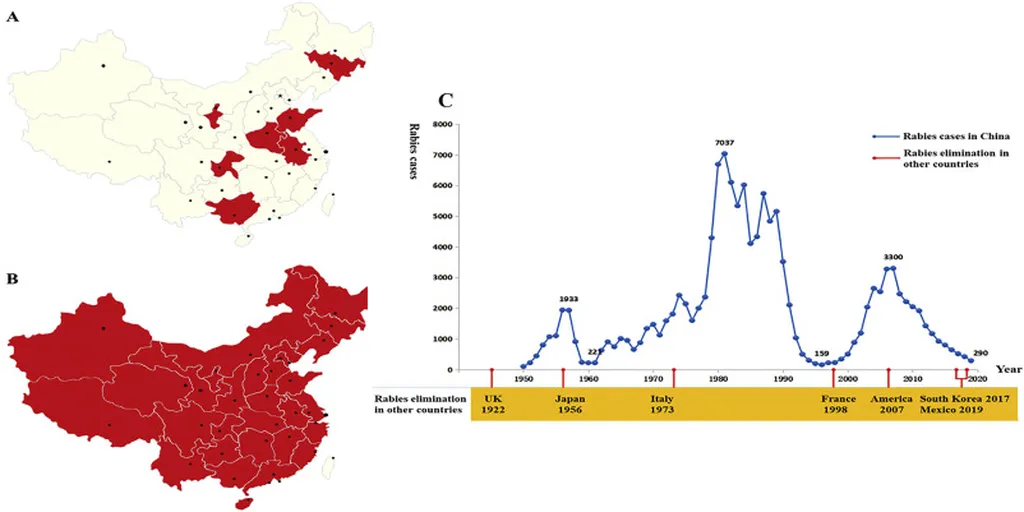In a significant stride towards enhancing rabies control efforts, researchers have developed a novel blocking ELISA method that promises to revolutionize the detection of rabies neutralizing antibodies in dogs and cats. This breakthrough, led by Yuewen Xiao from the College of Animal Medicine at Jilin University in China, offers a reliable and efficient alternative to conventional neutralization assays, potentially streamlining large-scale rabies vaccination assessments.
The study, published in the Journal of Clinical Microbiology (known in English as the Chinese Journal of Clinical Microbiology), introduces a blocking ELISA that utilizes purified rabies virus glycoprotein (G) expressed in HEK293T cells as the coating antigen and a labeled anti-G neutralizing monoclonal antibody as the blocking antibody. This innovative approach demonstrates an impressive overall agreement of 97.43% with the fluorescent antibody virus neutralization test, boasting a diagnostic specificity of 95.63% and a diagnostic sensitivity of 97.87%.
The implications of this research are substantial, particularly for the energy sector, which often grapples with the challenges of rabies control in animal populations. “This method provides a reliable alternative to conventional neutralization assays, facilitating efficient large-scale rabies vaccination assessment,” said Xiao. The high sensitivity, specificity, and reproducibility of the blocking ELISA make it a valuable tool for monitoring herd immunity and ensuring the effectiveness of rabies vaccination programs.
The study also highlights the commercial potential of this new method. The blocking ELISA’s ability to detect neutralizing antibodies with high accuracy and efficiency can significantly reduce the time and resources required for rabies surveillance. This, in turn, can lead to more effective rabies control strategies, ultimately benefiting both animal health and public safety.
Moreover, the inter-laboratory validation and comparison with commercial ELISA kits underscore the robustness and reliability of the developed method. The absence of cross-reactivity further enhances its utility in diverse settings, making it a versatile tool for rabies control efforts worldwide.
As the global community continues to strive towards the elimination of rabies, this research offers a promising avenue for improving the detection and monitoring of rabies neutralizing antibodies. The blocking ELISA developed by Xiao and colleagues represents a significant advancement in the field, paving the way for more efficient and effective rabies control strategies. This innovation not only holds commercial potential but also contributes to the broader goal of enhancing global health and safety.

